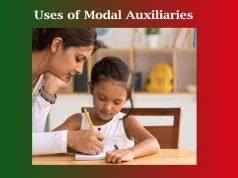Voice Change
Voice Change
Voice Change
Introduction
Understanding voice changes in grammar is crucial for effective communication. The two primary voices in English are active and passive. The active voice focuses on the subject performing the action, while the passive voice emphasizes the action and the recipient of that action. Voice changes occur across the 12 tenses in English, and let’s break them down.
Simple Present Tense:
Active Voice: Subject + base verb (s/es for third person singular)
Passive Voice: Subject (Object of the Active Voice used as Subject in the Passive Voice) + is/am/are + past participle
Example:
Active – “She paints the wall.”
Passive – “The wall is painted by her.”
Present Continuous Tense:
Active Voice: Subject + is/are/am + present participle
Passive Voice: Subject + is/are/am being + past participle
Example:
Active – “They are building a house.”
Passive – “A house is being built by them.”
Present Perfect Tense:
Active Voice: Subject + has/have + past participle
Passive Voice: Subject + has/have been + past participle
Example:
Active – “He has finished the work.”
Passive – “The work has been finished by him.”
Present Perfect Continuous Tense:
Active Voice: Subject + has/have been + present participle
Passive Voice: Subject + has/have been being + past participle
Example:
Active – “She has been teaching English.”
Passive – “English has been being taught by her.”
Simple Past Tense:
Active Voice: Subject + past tense of the verb
Passive Voice: Subject + was/were + past participle
Example:
Active – “They found the lost dog.”
Passive – “The lost dog was found by them.”
Past Continuous Tense:
Active Voice: Subject + was/were + present participle
Passive Voice: Subject + was/were being + past participle
Example:
Active – “He was cooking dinner.”
Passive – “Dinner was being cooked by him.”
Past Perfect Tense:
Active Voice: Subject + had + past participle
Passive Voice: Subject + had been + past participle
Example:
Active – “She had finished the book.”
Passive – “The book had been finished by her.”
Past Perfect Continuous Tense:
Active Voice: Subject + had been + present participle
Passive Voice: Subject + had been being + past participle
Example:
Active – “They had been playing football.”
Passive – “Football had been being played by them.”
Simple Future Tense:
Active Voice: Subject + will/shall + base verb
Passive Voice: Subject + will/shall be + past participle
Example:
Active – “She will cook dinner.”
Passive – “Dinner will be cooked by her.”
Future Continuous Tense:
Active Voice: Subject + will/shall be + present participle
Passive Voice: Subject + will/shall be being + past participle
Example:
Active – “They will be watching a movie.”
Passive – “A movie will be being watched by them.”
Future Perfect Tense:
Active Voice: Subject + will/shall have + past participle
Passive Voice: Subject + will/shall have been + past participle
Example:
Active – “She will have completed the project.”
Passive – “The project will have been completed by her.”
Future Perfect Continuous Tense:
Active Voice: Subject + will/shall have been + present participle
Passive Voice: Subject + will/shall have been being + past participle
Example:
Active – “They will have been studying for hours.”
Passive – “Studying will have been being done by them for hours.”
Conclusion
Mastering voice changes in various tenses allows for nuanced and varied expression in English. It’s not just about the action itself but also about how that action is carried out or received, adding depth and flexibility to your language skills. 0 0 0.
Voice Change







